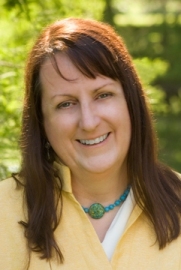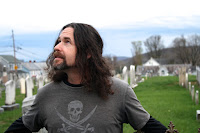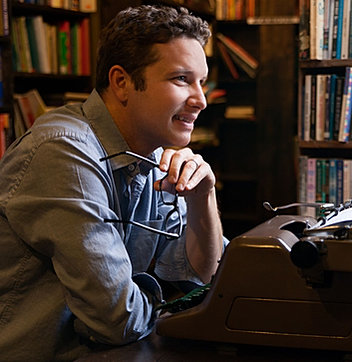Here at Project Mayhem, we've been fortunate over the years to have quite the cadre of talented writers and to maintain a wonderful sense of community. Through the years, we've said our share of goodbyes--but we've also been able to keep in touch. I thought our readership would be interested in what the Mayhem Alumni are up to right now!
Braden Bell:
Life is good. I've just finished directing "Mary Poppins," at the middle school where I teach, which was a joy of course. I had a book that was picked through KindleScout. It's a YA novel and will probably come out sometime in late Aprilish. I'm trying to write every day, currently querying a new MG fantasy.
Marissa Burt:
As you know most of my time has been happily taken up soaking in this new baby girl, Beatrix. She is almost three months old, such a gift to us all, and stays busy entertaining her three big brothers with all of her coos and smiles.
I've also just finished the final edits on A LEGEND OF STARFIRE (sequel to A SLIVER OF STARDUST), due out in October. And I've been working on a first draft for a write-for-hire project with Harper, which has been such a learning experience. That book will come out Fall of 2017. Other than that, I'm working on new book ideas and hope to have some time to dive into a new project this summer.
Yahong Chi:
Hello, dear Mayhemers! I'm writing from small-town Belgium—I'm currently studying for one term in Europe until the end of June. In the years since I left Project Mayhem, I've finished and shelved one MG contemporary novel, and begun a new MG fantasy along with a YA sci-fi. To fill the blog-shaped hole in my heart, I ran a small but dedicated book blog for two years. Most recently, I've taken on the role of social media coordinator at Disability in Kidlit, which I'm so very excited about! (And in non-book-related news, I've started a
knits blog & shop at Théo&Tia! Thank you to Michael for this chance to catch up with you all.
Dee Garretson:
I had a Boxcar Children book come out in fall 2015, THE SLEEPY HOLLOW MYSTERY, and I have another one coming out this fall, an election-themed one. I'm not sure of the title yet. I have the first book in a YA science fiction trilogy coming out in April 2017 from Month9 titled STATION FOSAAN and I'm very excited about that. I'm keeping busy writing the other two books in the trilogy. I also have a historical middle grade out on submission.
Joe McGee:
First things first, Project Mayhem ROCKS! I’m very happy to have been welcomed into the Mayhem with open arms and just as happy to be able to pop back in and share a bit about what I’m up to and what is going on. Ok, so…what IS going on?
Well, I’m very happy to announce that I just signed a two-book deal with Abrams! ALIENS AND JELLY, the sequel to PEANUT BUTTER AND BRAINS, is set for Fall 2017. Reginald and Abigail are back to solve a Quirkville dilemma. Aliens have landed and nobody knows exactly what they want. One thing is certain…if things aren’t cleared up soon, the mayor is going to have a very sticky situation on his hands. The second picture book is yet untitled (nothing to do with PB&B) and scheduled for Fall 2018.
Let’s see, besides that, I am working on a middle-grade series that I am very excited about and visiting schools to share my book and my love of writing, reading, creativity and imagination.
While I am still teaching writing at Rowan University, I am thrilled to announce that I have been hired as faculty at Sierra Nevada College’s low-residency MFA program, specifically in Writing for Children and Young Adults (WCYA)! SNC has an established MFA program for poetry, writing, and creative non-fiction, but this WCYA track is brand new. I’ll be joining YA superstars Amy (A.S.) King, Ellen Hopkins, and e.E. Charlton-Trujillo, middle-grade rock stars Pablo Cartaya and Lisa Papademetriou, creative non-fiction writer and poet, Gayle Brandeis, as well as literary agent, Jessica Regel (Foundry Literary and Media). So, yeah…super excited! Quite the line-up. Come write your stories by our campfire! In fact, I’ll be joining Brian Turner, the MFA Program Chair on #LitChat (Twitter), Monday, April 11th, at 9 p.m. EST.
For more info about #LitChat check out
http://litchat.com/a-special-litchat-mfa-chat-series/
To learn more about SNC, go to:
http://www.sierranevada.edu/academics/humanities-social-sciences/mfa-in-creative-writing/children-young-adults/
I’m with a new agency now! My agent, Linda Epstein, joined Mandy Hubbard at her new agency: Emerald City Literary Agency. I’m grateful for everything the Jennifer DeChiara Literary Agency has done for me, but I am also very excited to continue with Linda in the Emerald City.
I’m living in rural Pennsylvania in a tiny town (a village actually) that might be tucked away in a Harry Potter novel, with my absolute best friend and complete heart, Jessica Rinker. She has a YA novel and a middle-grade out on submission, is currently finishing another YA novel and putting the wraps on an awesome picture book biography. So, yeah…a lot of writing going on in our house. We just started a really good kid lit critique group featuring one of our own Mayhemmers, Donna Galanti! There are really good stories being developed in this group. Other than that, my hair is getting longer, my beard is getting grayer, and I’m just writing away!
Thanks for checking in. Happy writing, friends!
Shannon O'Donnell:
Right around the time I left Mayhem, I accepted the head coaching position of my high school's speech & debate team. My oldest son was a sophomore at the time. He is now a freshman in college, far from his mom and Montana, in Ripon Wisconsin.
I took some time away from my writing, but I recently submitted final edits of the first 13,000 words to my agent. We have a plan to submit the finished manuscript to publishers by fall. Finally. I had no idea life (teaching, coaching, parenting) would extend the end of this novel for so long, but I am eager to reach the end of final edits and the beginning of submissions.
Tracy Edward Wymer:
Two years ago I moved from teaching to administration. I'm now an assistant principal, and in my fifteenth year as an educator, all at the same school. The change to administration has been a learning experience, but I still get to connect with our students daily, and for that I am thankful. I'm still learning in my writing endeavor too. If you stick with the process long enough, there comes a little success. Okay, I'd consider this more than "little" but I think you know what I mean.
In 2015, Penguin (Grosset & Dunlap) released the anthology
BEEN THERE, DONE THAT: Writing Stories from Real Life (edited by former Project Mayhemer Mike Winchell). I was lucky enough to be part of this book, alongside an all-star lineup of middle grade authors and illustrators. In this anthology each author offers two stories, a nonfiction account of what really happened, and a fictional twist on the real events. I'm very proud of this book, and even more thrilling was watching Mike Winchell's vision unfold from idea to finished book.
In 2014 my agent sold my middle grade novel to Aladdin/Simon & Schuster. After months of editing and more months of final revisions, SOAR will be released on July 5, 2016. On July 4, there will be fireworks across the country to celebrate this great occasion. :-)
So great to catch up with all these fine former Mayhemmers. Go follow them on Facebook and Twitter, and all places social. Guys, best of luck to you all. Thanks for all you did to make the Mayhem so magical!
























